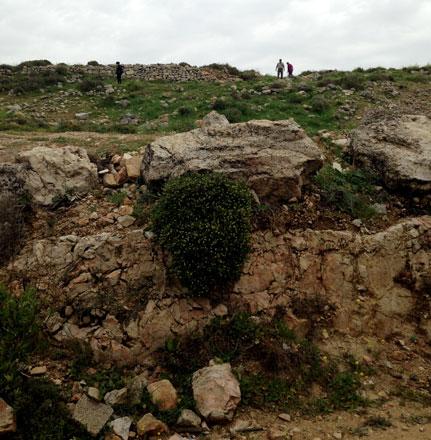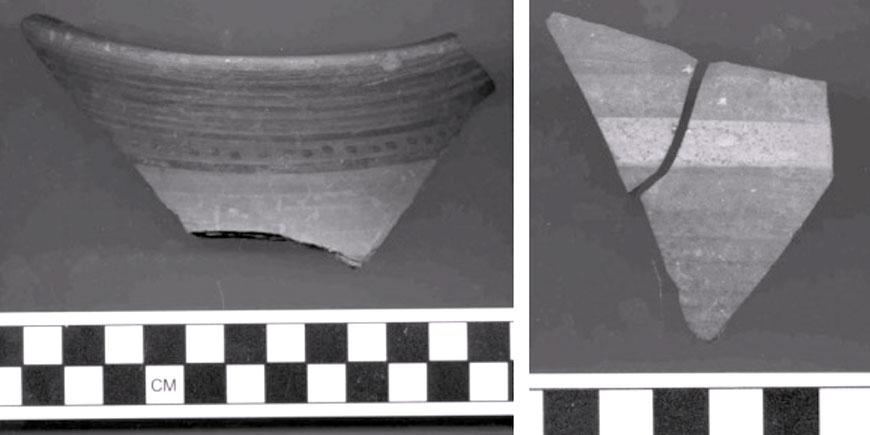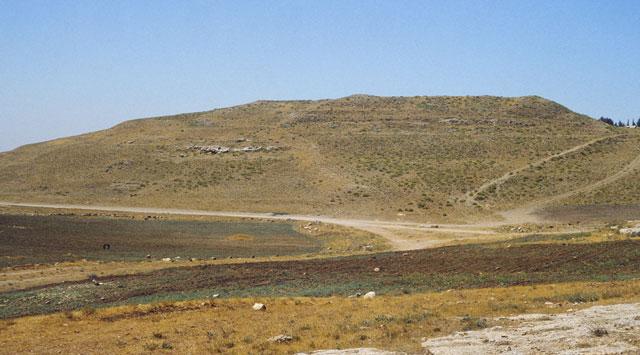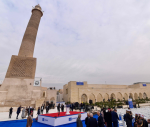You are here
US scholar explores trade links of early pastoralists in Levant
By Saeb Rawashdeh - Jun 22,2020 - Last updated at Jun 22,2020

Tell En Nasbeh, located 12 kilometres northwest of Jerusalem (Photo courtesy of Aaron Brody)
AMMAN — Although the economies of southern Levantine societies were defined primarily as agropastoralist, based on livestock and agriculture, historians have outlined the prevalence of commerce in ancient times, according to an American scholar.
Archaeologists have found that during the Iron Age (1190-700 BC), the Babylonian period (586-539 BC) and the Persian period (539-333/332 BC), interregional and international commerce took place, said Professor Aaron Brody, who received his PhD in Near Eastern Languages and Civilisations from Harvard University in 1996.
Recent publications on bronze bangles from these periods at Tell En Nasbeh, located 12 kilometres northwest of Jerusalem, suggest that one source of their copper was the Faynan mines in Edom, southern Jordan, said Brody.
“Tell En Nasbeh also contained seashells from species that only lived in the Red Sea. All of these items suggested interregional exchange with various regions of ancient Jordan,” elaborated Brody, who teaches archaeology and Biblical studies at the Pacific School of Religion in Berkeley.
Furthermore, the archaeological finds from the late Iron Age at Tell En Nasbeh show connections with ancient Jordan, Phoenicia and Cyprus, Brody said, noting that the greatest number and variety of imported goods came from ancient Ammon.
“This changes in the Persian period, with more non-perishable goods coming to Tell En Nasbeh in the central hill country of Palestine from the Mediterranean coast,” he continued, pointing out that the majority of these goods were from Greek colonies in Ionia, but they were likely traded by Phoenician merchants.
There was still some trade of Ammonite pottery and bronze bangles with Tell En Nasbeh in the Persian period, but much less than in the previous Iron II period, Brody noted.
The pottery imports are primarily painted wares and black wares that are ceramic hallmarks of the region of Ammon, from the Iron II and Persian periods, the scholar noted.
Regarding the ceramics found at the site, “all of the imported artefacts mentioned so far indicate a level of wealth and sophistication not typically attributed to the inhabitants of what was a large, fortified farming village in the late Iron Age, around three hectares in size and comprising a population of around 750-1000 people”.
“Similar wealth and sophistication may be deduced from the most intricate, contemporary bench tombs located outside of the settlement’s walls, which represent the burial sites of family lineages from ancient Tell En Nasbeh,” Brody said.
Material cultural evidence may help shed light on economic contact with other cultures, while contextual analysis of imports may inform researchers about economic stratification and modes of economic exchange, the professor concluded.
Related Articles
AMMAN — Rabbat Amman, Madaba, Dibon and Busayra were presumably the main ancient commercial sites in Transjordan and the Levantine coast, ac
AMMAN — The site of Jamaan is located in the Zarqa Governorate, approximately 16 kilometres north of Amman.
AMMAN — A group of researchers who explored the site of Tell Al Umayri, 12 kilometres south of Amman, has found a small table or “platform”


















